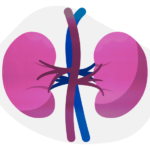Harnessing the power of machine learning to improve urology care

Urodynamics — a group of tests that evaluate how well the body collects, and then releases, urine — can be crucial for diagnosing urologic problems, particularly in children with spinal cord defects and other neurologic conditions. While urodynamics can provide clinicians with a rich set of data, the interpretation of these tests remains unstandardized. That can make it challenging for urologists to reliably read and analyze the results, says Hsin-Hsiao Scott Wang, MD, MPH, MBAn, a urologist in the Urodynamics Program at Boston Children’s Hospital.
To address this issue, Wang and his colleagues have developed a predictive model based on machine learning algorithms. This approach promises to improve physicians’ ability to accurately identify detrusor overactivity (DO), a urodynamics finding in which the bladder’s detrusor muscle contracts uncontrollably. Drawing from an archive of 799 urodynamics studies performed at Boston Children’s between 2013 and 2019, they identified five representative patterns of DO. They then created an algorithm and evaluated its performance in predicting DO.
Their results, published November 18, 2020, in Neurourology and Urodynamics, show that this predictive model had great performance with area under the curve over 0.8 and an overall accuracy of 81.35 percent, a sensitivity of 76.92 percent, and a specificity of detecting DO events of 81.41 percent. “We hope this can serve as the cornerstone and basis for future research marrying artificial intelligence (AI) and urodynamics,” says Wang.
Personalizing UTI workups in children
Machine learning also shows promise for helping to personalize the evaluation and treatment of children with urinary tract infections (UTIs). Children with febrile UTIs are at increased risk for anatomical abnormalities, including vesicoureteral reflux (VUR), which in turn is associated with recurrent pyelonephritis and renal scarring. However, it can be challenging to determine which children with UTIs should undergo further evaluation with a voiding cystourethrogram.
For a July 2019 study, Wang and his colleagues in Boston Children’s Department of Urology developed and applied a predictive model to data from 500 pediatric UTI patients. They found that this model predicted recurrent UTIs associated with VUR with very robust performance. The novel machine learning algorithm has the potential to further personalize the treatment of children with an initial UTI and identify those most likely to benefit from further evaluation. The model is now available as a free app called PredictVUR. Preliminary analysis shows that this model has helped tremendously for patient counsel and shared decision making in UTI children management.
“We hope by bringing machine learning and AI into urology, we as urologists can provide the best data-driven care and value for our patients and their families,” says Wang.
Learn more about the Department of Urology.
Related Posts :
-

At the forefront of kidney stone removal: Innovative approaches transform patient care
No longer considered just an adult problem, kidney stones increasingly affect children as well. The majority of children who cannot ...
-

Parsing the promise of inosine for neurogenic bladder
Spinal cord damage — whether from traumatic injury or conditions such as spina bifida — can have a profound impact on bladder ...
-

Modeling urinary tract disorders on a chip: Zohreh Izadifar
When a new tissue sample arrives from the Department of Urology, the Boston Children’s Hospital lab of Zohreh Izadifar, ...
-

AI-enabled medical devices are burgeoning, but many haven’t been tested in children
Medical devices that incorporate artificial intelligence and machine learning are proliferating. In 2013, the FDA approved fewer than 10 such devices; by 2023, ...





